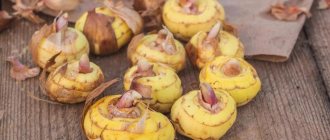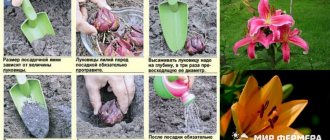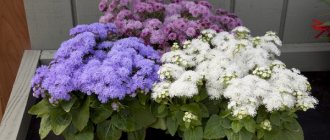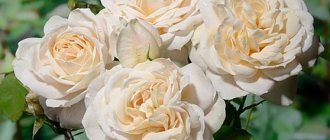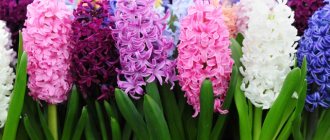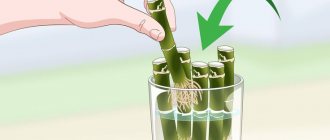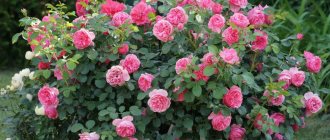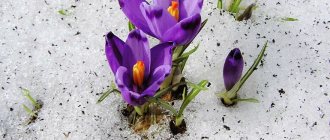Geranium is one of the most beautiful flowers that can grow both in a room, planted in a pot, and planted in a garden plot. Very often the plant is called pelargonium, although this is not entirely true, since pelargoniums are a variety of indoor crops, while geraniums usually grow in open ground.
Be that as it may, in order for the flower to grow and develop, you should know the planting rules, which will be discussed below.
How to plant geraniums in a pot
Considering that most gardeners do not have the opportunity to plant a flower in the garden, they use a regular pot for these purposes. If everything is done correctly, the plant will delight you with its lush flowering. The flower does not like to be left with a lot of space in the container, so pots for pelargoniums should be small.
When planting a cutting, you can take a small jar (be sure to make drainage holes in it), and when the roots begin to grow, then you can buy a small pot. As for the material from which the product is made, the soil in a plastic pot will dry out much more slowly than in a ceramic one, but the second option is preferable, because ceramics is a natural material.
Read How to propagate geraniums from cuttings in the fall
Planting geraniums at home is very simple. True, first you need to take care of the substrate. The flower is quite capricious, so it will not grow in soil that does not meet certain requirements.
The soil mixture may be as follows:
- Purchased soil, which will need to be mixed with some components (vermiculite, perlite and river sand).
- Earth taken under trees or bushes (before use it must be disinfected using a manganese solution).
- Mix eight parts of turf soil, two parts of humus and 1 part of coarse river sand.
Important! Geranium shoots are best planted in spring. This is the period when the young plant will quickly grow, and by winter it will be a small flower.
If for some reason it was not possible to plant in the spring, then you can still consider September. At other times, it is better not to start rooting the shoot, because there is a high probability of its death.
Diseases and pests
Geranium has a wonderful property - it repels insects that can harm it. But sometimes this green “fighter” is still exposed to diseases and pests.
- Gray rot. The entire plant is covered with bluish-gray spots and bloom. Occurs due to high humidity, lack of lighting and lack of heating. For treatment you need to use fungicides.
- Powdery mildew. Characterized by a white coating. It is necessary to remove the affected areas and treat with a fungicide (Bordeaux mixture).
- Rust. Brown-rusty spots appear on the leaves. Subsequently, the leaves dry out. Fungicides will help get rid of rust.
- Alternaria blight. Brown spots appear on geranium leaves with a light center and a velvety coating. You can get rid of it by treating the plant with fungicides.
- Ring spot. Light spots shaped like a ring form on the plant. The leaves then curl up and hang like umbrellas.
- Verticillium wilt. The leaves begin to turn yellow below, then completely turn yellow and wilt. Stems and inflorescences can also be affected. The disease appears if the soil is too dry.
- Root and stem late blight. Because of this disease, the plant withers and rots. It is necessary to reduce the amount of watering and treat the flower with special products.
- Edema. Characterized by the appearance of bubbles on the leaves. It is necessary to remove the diseased plants immediately so that the disease does not spread to the entire plant. To avoid the occurrence of such a disease, the flower is planted in warm, well-drained soil. Moisture-loving neighbors are not suitable for geraniums.
The main flower pests are:
- aphids (ash infusion - 1 spoon of wood ash per 1 liter of water - used to combat it);
- whitefly;
- thrips;
- caterpillars (they are collected by hand);
- spider mite (it appears if geranium grows in a dry and hot climate; to get rid of spider mites, the plant is treated with a soap solution).
Geranium can get sick due to improper care:
- the leaves have turned yellow and become withered - this is facilitated by a violation of the watering regime;
- the stems become bare - the plant does not have enough light;
- spots appear and the flower begins to rot - due to a fungal infection.
General rules for planting a flower
There are rules that should always be followed when planting pelargonium. In this case, you can count on a successful outcome of the case.
These rules are:
- If the pot has become small, the plant should be transplanted into a larger container. In this case, manipulation is carried out by transshipment. That is, an earthen ball is taken along with the root and placed in the prepared soil mixture. After this, soil is added to the edges of the pot and compacted. Next comes watering.
- When the plant takes root, it will be necessary to pinch it from time to time so that the pelargonium stretches upward.
Why carry out the procedure at home?
Planting geraniums is one of the important and necessary conditions for your plant to have an attractive appearance and remain healthy and strong. Geranium can grow for up to 10 years - naturally, during this time it grows into a large bush. Rejuvenating the bush helps give it a more well-groomed appearance and cause abundant flowering.
In addition, replanting is used when new plants are needed. After all, you can never have too many geraniums! Pelargonium can be used to decorate not only a window sill or a balcony. In summer, geranium will look great in a flower bed in the garden (how to grow geranium in open ground?).
When planting the plant, do not choose a pot that is too large. It is better to replant pelargonium as it grows (for example, once a year - in February, March) and gradually increase the size of the flowerpot.
Early spring is considered the best time for this procedure - by summer the plant will already adapt and will delight you with bright flowers.
You can also plant geraniums after the period of active flowering - this is September-October.
How to plant geraniums in open ground
When deciding to plant a flower outside, it is important to know how to properly plant geraniums in open ground so that the plant does not die.
This is done like this:
- First of all, you need to choose a place. This should be a light area, but not open, so that occasionally the pelargonium is in the shade.
- Next, you should thoroughly loosen the soil.
- Afterwards, you need to scatter the compost on top and mix it with the soil mixture.
- At the next stage, you need to dig a shallow hole, take out the geranium shoots and send them into the hole. After completing this manipulation, you can water. The leaves should also be moistened from time to time. At this point the procedure can be considered complete.
Considering that young plants, and old ones are no exception, cannot withstand frost, bushes cannot be left in the winter. When it gets colder outside, you will need to cut the flower itself by 5-7 cm, dig it out of the ground, cut off a third of the rhizome, and then put it in a container with soil.
Harvesting cuttings
For better survival, mother bushes are selected and cuttings are cut, guided by the following rules:
- Healthy and strong pelargoniums are suitable for reproduction;
- cuttings are cut from the top of the bush;
- for work, use a sharply sharpened knife with a disinfected blade;
- cut cuttings 8 cm long with 2-3 internodes with an oblique cut;
- if the stem is long, cut 2 cuttings from it, making the upper cut directly above the bud;
- the stump above the bud is kept minimal so as not to provoke rotting;
- The leaves are torn off from below, leaving 3 to 5 leaves on the stem;
- all flower stalks with buds are plucked to improve survival.
Methods for planting geranium seeds
Some gardeners do not like to take the simple path, choosing something more difficult. Therefore, they decide to propagate geranium using seeds. In order to implement our plans, it is necessary to carefully select planting material; it must be of high quality. If the seeds turn out to be old or rotten, then seedlings may not be expected. After this, you will need to take a tray or other wide container, fill it with soil, water it a little, scatter the seeds on top and cover the greenhouse with a transparent film. Be sure to put all this in a warm place. Having noticed the first sprouts, you can remove the film and wait for the leaf plates to appear. After this, the young pelargonium is allowed to be transplanted into a separate pot.
Possible problems
If after planting the plant begins to wither or strange spots appear on the leaves, then it is likely that the flower has been affected by a disease. In this case, you need to treat the plant with insecticides.
Reference! There are quite frequent cases when, after planting geraniums under optimal weather conditions, cold weather sets in. Replanting the plant back into the pot is not always advisable, as this can be traumatic for the flower itself. In such cases, you need to insulate the soil itself around the bush and cover the flower with film so that a mini-greenhouse is created.
In general, if you step by step and correctly follow all the recommendations regarding the preparation, planting and subsequent care of the flower, then no problems will arise.
Due to the fact that in the first two weeks geranium is especially vulnerable to parasites, sudden changes in temperature and soil conditions, you need to carefully care for it. This will help the plant strengthen and grow healthy.
How to plant geraniums as shoots
Planting by cuttings is the easiest way if you want to propagate geraniums. In addition, the shoots make it possible to preserve all the properties of the main flower.
Important! Geranium cuttings are cut and planted only in spring.
In order to perform the manipulation you must:
- Take small plastic cups or other containers. Make holes in them and add drainage to the bottom. It must be said that good drainage will not allow young plants to rot if overflows are suddenly carried out.
- After this, you need to take the soil and sprinkle it with a manganese solution.
- Next you need to choose and take a shoot from a geranium. Only strong specimens should be used. In addition, the shoots must have several leaf plates. After cutting off the planting material, the sections need to be rubbed with activated carbon.
- At the next stage, the cuttings are planted in the ground and watered. The rest of the time there is no need to irrigate the future flower. To prevent it from drying out, you should take a tray, pour some water into it and place the cups there. This entire structure is placed in a cool room. As the water evaporates, it can be added.
- Young pelargonium is planted in the ground after a month.
As already mentioned, planting a geranium with a shoot without roots is simple, and the result will not take long to arrive.
Main diseases, pests and their control
If mistakes are made during planting or care, the plant may become sick or be affected by pests.
Most often, infections occur with the following diseases:
- Leaf spotting. Signs: brown, brown, light green spots on the foliage. Diseased organs must be destroyed by burning. If the disease is at an initial stage, then treatment with biofungicides - Fitosporin-M, Gaupsin - will help. In case of severe infection, stronger drugs will be required.
- Powdery mildew. Symptoms are a white powdery coating on the leaves. Fungicides and colloidal sulfur are used for treatment.
- Gray rot. Appears as gray spots on the leaves. It is treated with “Fundazol”, “Vitarol”, “Rovral”.
Did you know? All organs of geranium have medicinal properties. They are used to prepare remedies for various diseases in official medicine and folk healing.
The most common pests that can attack geraniums are:
- Ticks. Small yellow dots on the foliage will tell you that they have started on a flower. These parasites like to actively reproduce during hot and dry periods. The fight against them consists of wiping with a soapy solution, treating with insecticides “Fitoverm”, “Bi-58”, Karate”, “Iskra-M”, “Aktellik”.
- Aphid. This dangerous harmful insect, when colonized en masse on a plant, can literally drink all the juices from it and lead to death. Signs of infection are yellowing and curling leaves, lethargy, leaf fall. The methods of dealing with aphids are the same as with mites.
- Whitefly. It is easy to notice the presence of this pest - white butterflies fly over the flowers. However, it is not the moths that pose the danger, but their larvae that feed on the leaves. You can fight whiteflies with herbal decoctions and infusions, tobacco infusion. In case of severe infection, spraying with chemicals will be required - “Aktellik”, “Fitoverm”, “Aktara”, “Fufanon”.
In addition to diseases and pests, the plant may suffer from other problems, which will be indicated by changes in appearance:
- The leaves turn yellow and the ends dry out. One possible reason is lack of moisture. Lost leaves need to be removed and watering gradually increased.
- No flowering. There are several reasons: lack of light, cold temperatures, lack of mineral elements, prolonged lack of pruning.
- Formation of brown growths on the underside of the leaf. The reason is strong root moisture and high humidity. There is an urgent need to reduce watering and adjust its regime.
Important! Yellowing of geranium foliage some time after planting is normal. Yellow leaves need to be removed and quality plant care provided.
After some time, the flower adapts.
Methods for planting pelargonium with rhizomes
We figured out how to plant geraniums without roots, now we need to tell you how to do it using rhizomes.
Everything is extremely simple:
- A flower is taken out of the pot, the roots are washed with water, and then divided into several parts with a disinfected knife.
- All sections are carefully covered with activated carbon.
- The planting material is soaked for some time in a special solution - a growth stimulator, and then sits in a pot.
If there are any doubts about this method, then it is better to plant the geranium correctly with a shoot and not suffer with the roots.
Care after transplant
In addition to the fact that bright light is contraindicated for the plant for the first time after transplantation, there are other care features. So, watering is carried out very moderately, not allowing the soil to dry out; the leaves are never sprayed. No feeding is given for at least two months: fresh soil contains enough nutrients for the resumption of growth and normal development of geraniums in a new pot. Then fertilizing is carried out monthly, using any complex fertilizers, but the first time they are applied in a reduced dose.
Ways to care for young geraniums in the cold season
Geraniums not only tolerate cool weather well, they literally look forward to it. During this period, the flowering period stops and the plant can rest a little, gaining strength for the spring. At this stage, you should properly trim the flower, feed it and shape its crown.
If we are talking about a houseplant, then you need to pay attention to the following nuances:
- In the last days of summer, as well as in September, watering is noticeably reduced. At this moment, carefully monitor the root system. If the pot is standing outside, where the temperature begins to drop to +12 degrees Celsius, then irrigate the plant with caution. When the temperature drops, pelargonium should be brought into the house.
- In order to form a bush, you need to trim off all rotten and dry leaves and pinch the crown.
- In winter, the flower pot is transferred to a cool place where the temperature fluctuates between +12..+15 degrees Celsius. Watering at this point is reduced to a minimum.
- With the arrival of spring, the first thing to do is fertilize the geranium, and then begin to plant it in the ground or propagate it.
Read How to fertilize geranium so that the leaves bloom and do not turn yellow
As for a flower growing outside, it is dug up for the winter, planted in a pot and cared for as described above.
What will you need?
Prepare everything you need and start cutting, and we will tell you all the most important points that you should pay attention to. Take:
- nutrient soil;
- a pot with a drainage hole;
- scissors;
- fungicide (sulfur, activated or charcoal);
- root formation stimulator;
- healthy pelargonium seedlings;
- water for irrigation.
Watering flowers
Pelargonium, unlike other flower crops, requires special watering, which is preferably done in the morning. Due to this, the plant will receive a sufficient amount of moisture for the whole day and will avoid root rotting.
Advice! It should be moistened generously, but so that the liquid does not touch the leaves. If the foliage is constantly exposed to moisture, they may wilt, and the plant may then die altogether.


